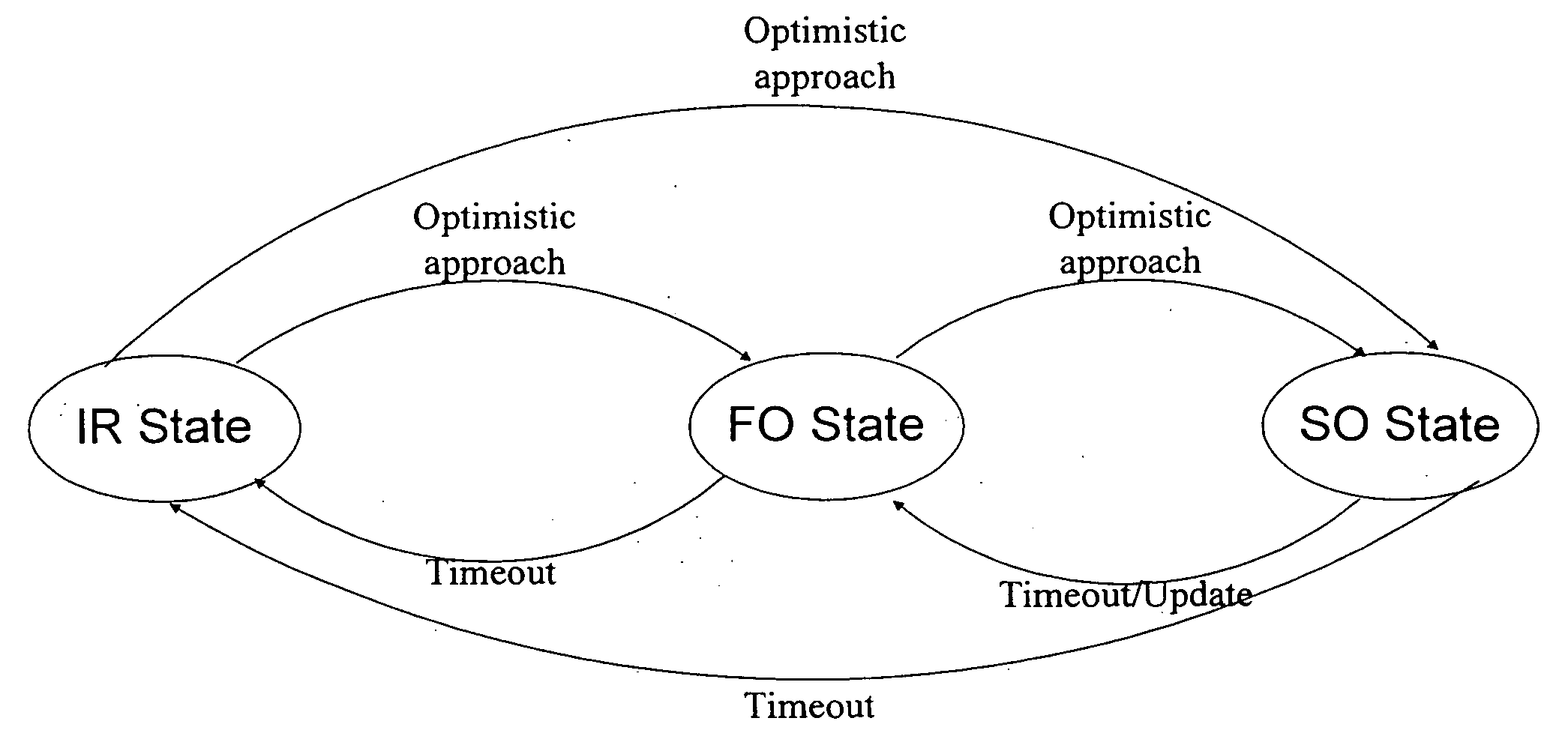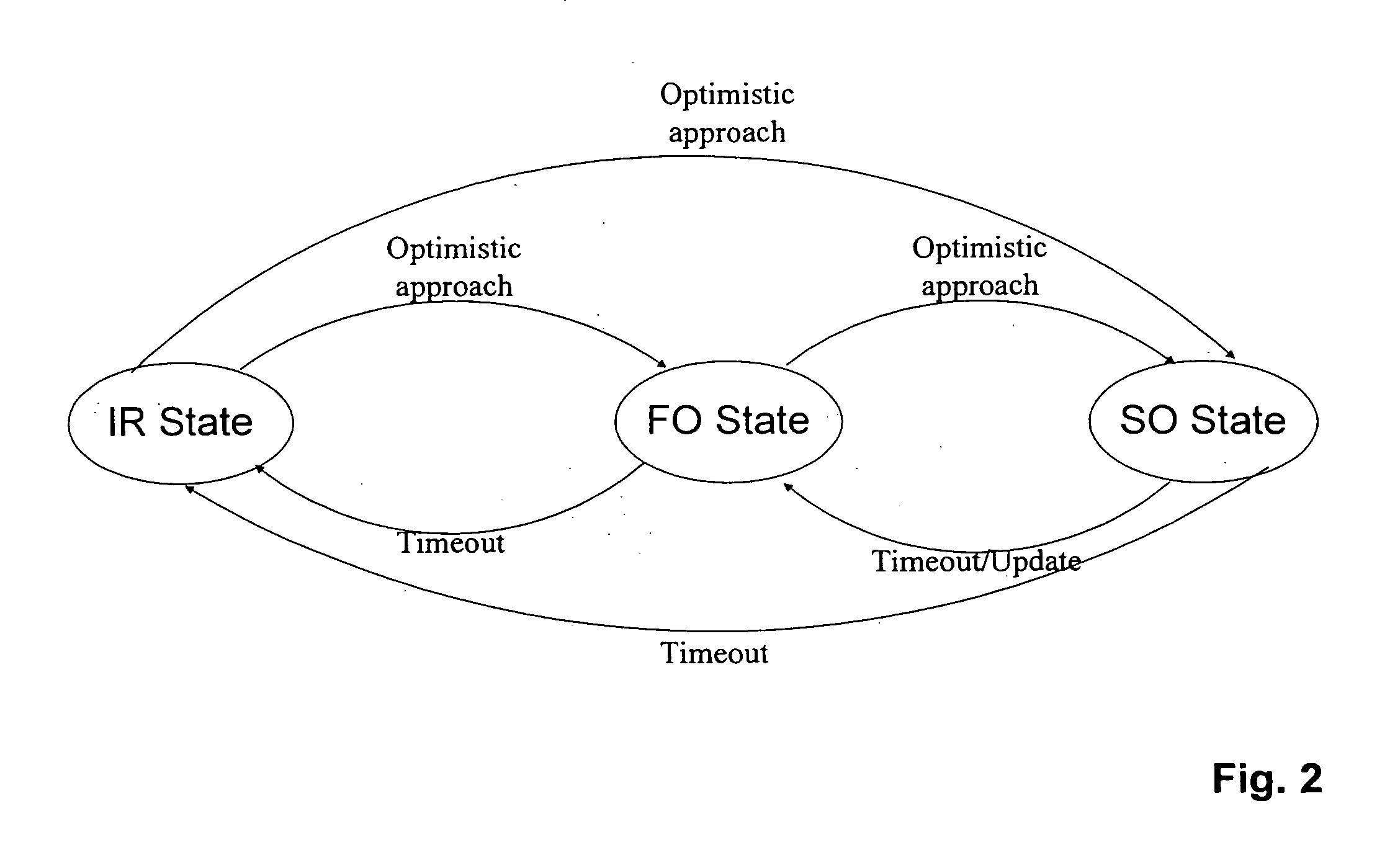Method for the exchange of data packets in a network of distributed stations, device for compression of data packets and device for decompression of data packets
a distributed station and data packet technology, applied in the field of network communication, can solve problems such as the conflict between compression state and mode transition, and the decrease of negative acknowledgement traffic, and achieve the effect of avoiding chaos
- Summary
- Abstract
- Description
- Claims
- Application Information
AI Technical Summary
Benefits of technology
Problems solved by technology
Method used
Image
Examples
Embodiment Construction
[0029]In streaming applications, the overhead of Internet Protocol IP, User Datagram Protocol—UDP, and Real Time Transport Protocol—RTP is 40 bytes for IPv4, or 60 bytes for IPv6. For Voice over IP—VoIP this corresponds to around 60% of the total amount of data sent. Such large overheads may be tolerable in wired links where capacity is often not an issue, but are excessive for wireless systems where bandwidth is scarce.
[0030]ROHC compresses these 40 bytes or 60 bytes of overhead typically into only 1 or 3 bytes by placing a compressor before the link that has limited capacity and a decompressor after that link. The compressor converts the large overhead to only a few bytes, while the decompressor does the opposite.
[0031]The ROHC algorithm is similar to video compression, in that a base frame and then several difference frames are sent to represent an IP packet flow. This has the advantage of allowing ROHC to survive many packet losses in its highest compression state, as long as th...
PUM
 Login to View More
Login to View More Abstract
Description
Claims
Application Information
 Login to View More
Login to View More - R&D
- Intellectual Property
- Life Sciences
- Materials
- Tech Scout
- Unparalleled Data Quality
- Higher Quality Content
- 60% Fewer Hallucinations
Browse by: Latest US Patents, China's latest patents, Technical Efficacy Thesaurus, Application Domain, Technology Topic, Popular Technical Reports.
© 2025 PatSnap. All rights reserved.Legal|Privacy policy|Modern Slavery Act Transparency Statement|Sitemap|About US| Contact US: help@patsnap.com



